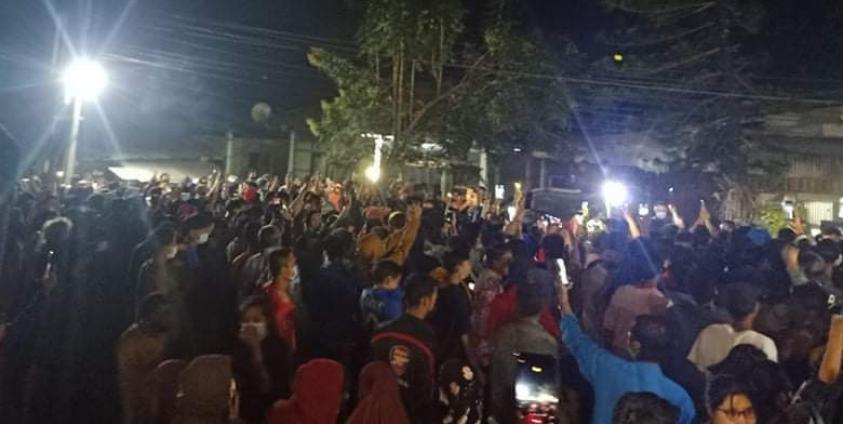A Facebook live-streaming of the protest showed protestors destroying buildings and facilities belonging to the Thai camp commander as well as security checkpoints and entrance gates.
A protester could be heard in the Facebook live-stream shouting; “We can’t afford to pay the 1,000 Baht travel permit cost,” suggesting anyone who wanted to leave the camp had to pay 1,000 Baht for a travel permit if they wanted restrictions to be waived. The protest ended when the Thai security fired ‘live’ ammunition.
A camp resident who witnessed the protest said it started with a peaceful negotiation between residents and camp security officials. But as protestors increased, emotions also built up and it sparked a riot.
A camp resident living in Zone A, told Karen News, people were angry at their motorbikes being taken and the preferential treatment given to refugees who could afford to pay for travel permits.
“These incidents created a lot of anger, until the anger finally exploded. Gunshots were fired by Thai camp security officials, but we don’t know if there were any people wounded.”.
Protestors claimed the Thai camp commander or ‘Palat‘, despite the enforced travel restrictions due to the COVID-19 pandemic, was willing to issue to refugees who could pay for travel permits.
A camp committee member told Karen News the large protest was triggered when Thai camp security officials confiscated motorbikes of riders not wearing masks as part of the COVID-19 prevention measures.
“Camp residents were not happy after security officials took their motorbikes, so they protested in front of the ‘Palat‘ office.”
Protestors claimed the Thai camp commander’s lifting of the enforced travel restrictions for those who could pay for travel permits was the cause of the protests.
Before COVID-19 pandemic travel restrictions were issued, camp residents, with understanding, could leave to work as daily laborers or go foraging for food and vegetables to supplement their reduced camp rations.
Camp residents said it was unfair that while camp residents were forced to stay in the camp, due to COVID-19 prevention measures, business operators who could afford to pay the 1,000baht for a travel permit were allowed to go in and out of the camp to run their businesses.
Camp residents said that most ordinary camp residents were unable to pay 1,000 baht to leave the camp to work as daily laborers as at most they would only earn around 300baht a day.
Mae La refugee camp with around 40,000 refugees, is one of the largest camps along the border located in Thasongyang district of Tak province – 60 kilometers north of Mae Sot.
In September 2020, a similar protest happened in the Tham Hin refugee camp where hundreds of camp residents gathered to demand fair treatment from camp officials for refugees after travel in and out of the camps were restricted. Refugees accused of breaking the tightened restrictions – offenders were penalised by camp officials with corporal punishment and fines.
There are nine refugee camps along the Thai-Burma border – Mae La, Umphiem, Nu Po, Mae La Oon, Mae Ra Ma Luang, Tham Hin, Bandong Yang and Karenni Camps No. 1 and No.2 with more than 90,000 people.








